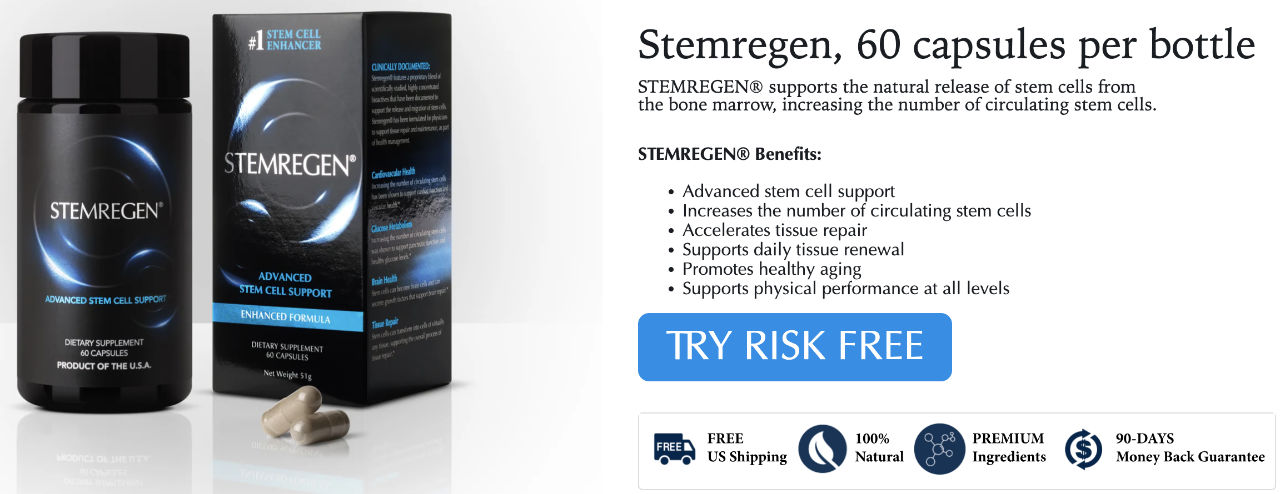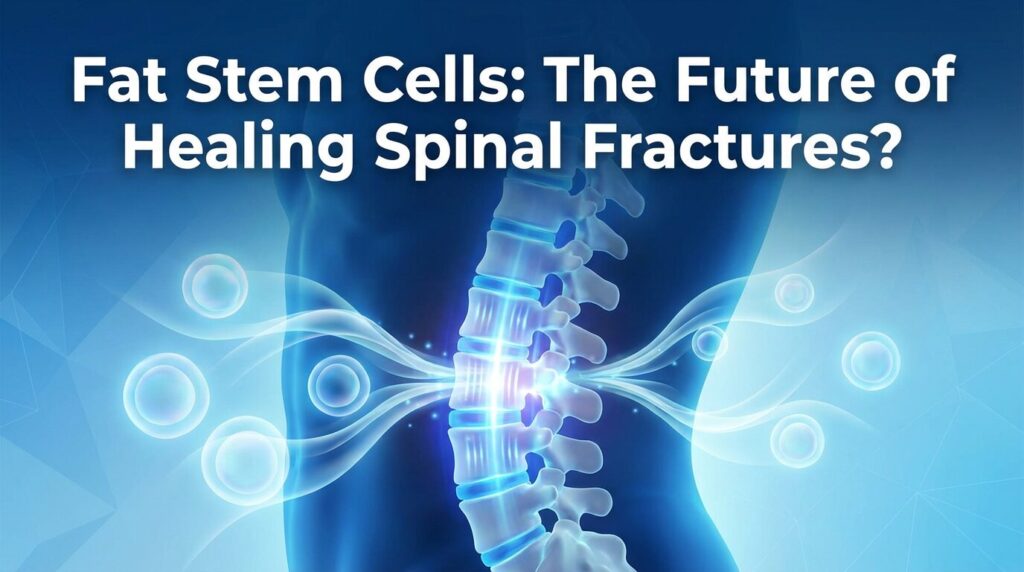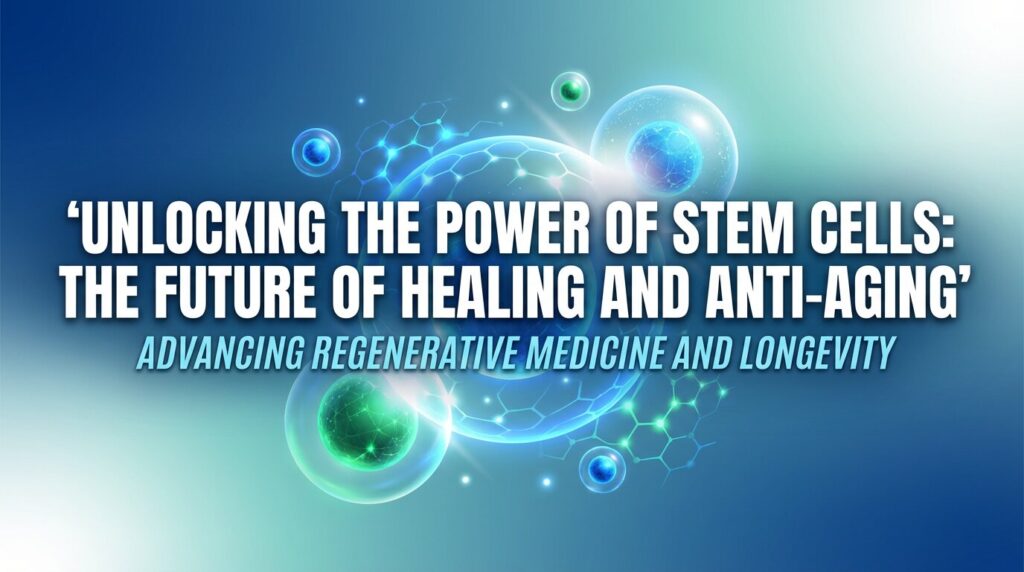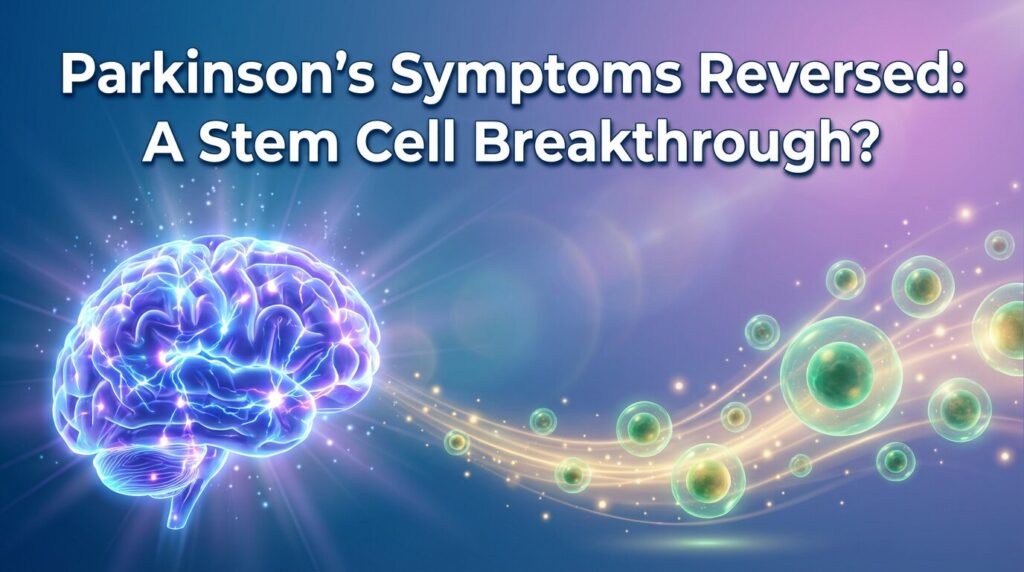Do you ever feel unwell, but your doctor says all your tests are normal?
You are not alone. Many people experience a state of feeling sick without a clear diagnosis. This frustrating situation is what Dr. E, the NP with a PhD, calls “I-don’t-feel-good-itis.”
In a recent episode of The Medical Disruptor, she and neuroscientist Christian Drapeau discuss a groundbreaking explanation: the decline of your body’s natural repair system, driven by stem cells.
This article explores the key insights from their conversation. We will explain how your body has its own powerful repair mechanism. You will learn why this system weakens over time and what you can do about it.
Your Body’s Hidden Repair Crew
Your body has an amazing ability to heal itself. You have seen it your whole life. A cut on your finger heals. A broken bone mends. But how does this happen?
Christian Drapeau was the first to propose that stem cells are the foundation of your body’s repair system. He published this idea in a medical journal back in 2002. Stem cells are like a crew of repair workers, ready to fix damage and maintain your organs.
“Every single human being on the planet has seen that their body repairs,” Drapeau says. “You’ve got a repair system. Not only they can, they have done it silently, invisibly, your entire life.”
Unlike specialized cells in your body (like skin or liver cells), stem cells are versatile. They can transform into any type of cell that your body needs.
This process of tissue renewal happens constantly. Your skin replaces itself every month, and even your heart has a small percentage of turnover each year.
Why You Feel Worse as You Age
When you were younger, you recovered from injuries quickly. As you get older, recovery takes longer. This is not just a feeling; it is a biological reality. The number and activity of your stem cells decline significantly as you age.
This decline is a natural process. The red marrow in your bones, which produces stem cells, gradually turns into fatty marrow that does not. This change has a major impact on your body’s ability to repair itself.
| Age | Red Marrow Loss | Stem Cell Decline |
| By Age 15 | 50% | Significant |
| By Age 30 | 90% | 90% |
| 40 and older | Continues | Slower recovery |
Certain lifestyle factors can also harm your stem cells. Smoking, excessive alcohol, and high stress all reduce their activity. This decline in your repair system is a key reason why age-related health problems begin to appear.
The “Pre-Disease” Danger Zone
When your doctor tells you your tests are normal, it means you have not yet crossed the line into a diagnosable disease. However, it does not mean you are perfectly healthy. You may be in what experts call a “pre-disease” state.
For many chronic conditions, the damage begins long before a diagnosis is made. For example, by the time someone is diagnosed with type 2 diabetes, they may have already lost over 60% of their insulin-producing cells. This loss can happen over 20 years.
“You’re not diseased yet,” Drapeau explains. “You’re on your way.”
This is the critical time to support your body’s repair system. Waiting for a diagnosis means you are trying to fix a problem that has become much more serious. By acting early, you can help your body maintain its health.
Unlocking Your Body’s Healing Potential
So, what can you do to support your stem cells? Christian Drapeau’s research has shown that certain plant extracts can help your body release more of its own stem cells. This is a natural way to boost your repair system.
He began his research with a type of blue-green algae. He has since found other plants that are even more effective at mobilizing stem cells. These natural compounds can give your body the tools it needs to heal.
Christian Drapeau’s natural supplement protocol can be found here.
However, simply releasing more stem cells is not always enough. Two other factors are very important: microvasculature and inflammation.
The Importance of Tiny Blood Vessels
Your stem cells travel through your bloodstream to reach areas that need repair. If the tiny blood vessels (microvasculature) in an injured area are damaged, the stem cells cannot get where they need to go. It is like a repair crew being blocked from reaching a worksite.
The Problem with Chronic Inflammation
Inflammation is a signal that your body sends when there is an injury. It tells your stem cells where to go. But what happens when an injury does not heal because there are not enough stem cells?
The inflammation signal keeps being sent. It becomes a constant, low-level fire throughout your body. This is known as systemic inflammation.
“Inflammation is not the problem,” Drapeau clarifies. “Inflammation is the result of another problem… an unrepaired injury.”
This systemic inflammation creates a lot of noise. Your stem cells cannot find the original source of the injury. It is like trying to find a small fire in a house full of smoke. Reducing this systemic inflammation is a key step to allowing your stem cells to work effectively.
A New Way of Thinking About Health
Modern medicine is very good at managing diseases. It can lower your blood pressure or give you insulin. But it rarely offers a cure.
“Medicine does not cure,” says Drapeau. This is a fundamental concept in modern healthcare.
The stem cell approach offers a different way of thinking. It focuses on helping the body heal itself. This is a shift from managing symptoms to addressing the root cause of health problems.
Dr. Doris Taylor, a leading researcher, conducted a remarkable experiment. She took a mouse heart and washed away all the muscle cells, leaving only the collagen structure. She then added stem cells. A week later, there was a beating heart in the test tube. This shows the incredible power of stem cells to rebuild tissues.
Take Control of Your Health
Feeling sick when your tests are normal is a sign. It is your body telling you that its repair system is struggling to keep up. By understanding the role of stem cells, you can take proactive steps to support your health.
Supporting your stem cells naturally, opening up your microvasculature, and reducing systemic inflammation are powerful strategies. They can help you move from a state of “I-don’t-feel-good-itis” to a state of true wellness. You have the power to help your body heal itself.



